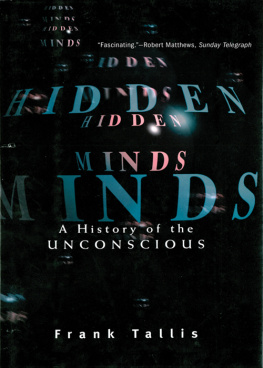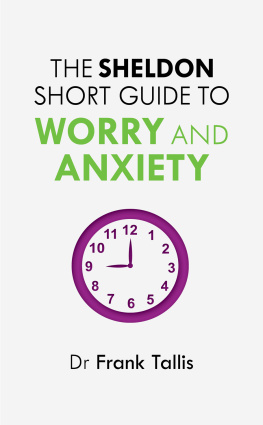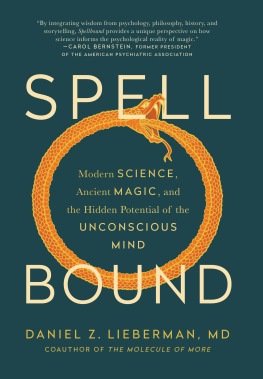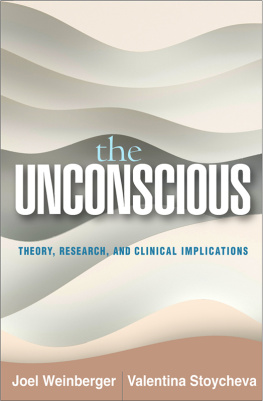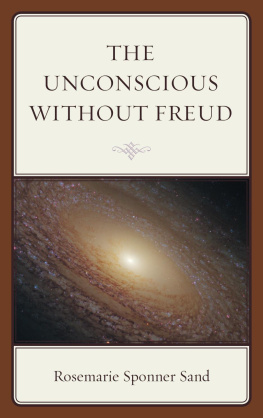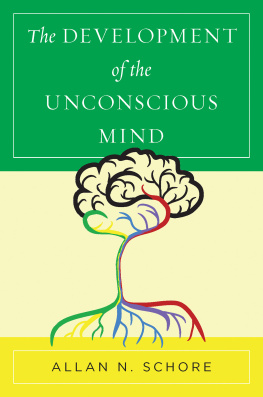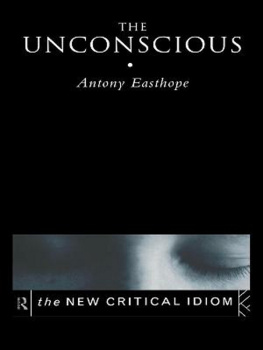10. The third blow
Acknowledgements
I would like to thank the following: Professor Michael J. Power for reading the first draft of this book and providing many helpful comments, Andrew Franklin for his expert editorial guidance, Wyliys Poynton for locating Myers (1886) article on the work of Pierre Janet, and Dr Jackie Andrade for directing me towards relevant research on learning under general anaesthesia. I would also like to thank Dr Doris Silverman and Dr Carolyn Ellman for providing me with biographical information on the late Lloyd Silverman. Finally, 1 would like to thank Nicola Fox for her invaluable assistance in the production of this book at every stage, from conception to final draft. Needless to say, any flaws, errors, or shortcomings are entirely mine.
Introduction
P erhaps the first individual to acknowledge that some parts of the mind are necessarily unavailable for introspection was St Augustine. He wrote I cannot grasp all that I am, meaning that at any single point in time he could be aware of only a fraction of his totality. All his memories and knowledge most of what contributed to his sense of self remained beyond awareness. Augustine recognised that consciousness has a limited capacity. It is only possible to suspend a small number of images or words in the medium of consciousness. Yet, even when our conscious minds are fully occupied watching a sunset, or reading a book the sense of being who we are is generally well preserved. Our personal history recorded in the form of memories although far too extensive to be squeezed into a single moment of awareness, continues to impress on us a unique sense of identity. We feel the presence of our unconscious mind like a ghost. Invisible, but nevertheless somehow there.
The concept of the unconscious is surprisingly ubiquitous; scientists and poets, philosophers and artists, neurologists and mystics have all explored or discussed the concept of the unconscious. It has been the subject of learned dissertations as well as films, plays, and even a hit Broadway musical. But what is it, exactly? And how important is the unconscious in contemporary accounts of the human mind?
Although the unconscious has been approached from a variety of perspectives, the term unconscious is generally employed to refer to parts of the mind (or processes operating within the mind) that are either permanently or temporarily inaccessible to awareness; however, beyond this simple description, two contrasting ideas of the unconscious have repeatedly found (or lost) favour.
The first imbues the unconscious with many of the properties associated with consciousness: it can analyse information, make judgements, and sanction decisions. As such, it resembles a kind of bidden auxiliary intelligence. The second idea invests the unconscious with the properties of a machine. Information in the unconscious is simply processed by the neurological equivalent of a factory production line disinterested, unreflecting, and automatic.
Artists and writers have always favoured the former view. There are numerous accounts of great works of art being produced without any conscious effort. Schiller, Goethe, Mozart, Coleridge, and Blake all produced masterpieces which seemed to enter awareness whole completed and ready for transcription; however, creative artists are not the exclusive beneficiaries of a bountiful unconscious. Many scientists and mathematicians for example Poincar, Gauss, Kekule, Bohr, and Einstein aiso arrived at the solution to complex problems while dozing or simply going about their usual everyday tasks. Revelatory experiences suggest the existence of a sophisticated unconscious, capable of undertaking complex mental operations. Clearly, such an unconscious is a valuable resource. But can the unconscious be exploited? Can it be encouraged to produce great works of art and solve problems? And if instructed, will it obey?
In the past, many methods have been employed to tap the unconscious and harness its powers. In the eighteenth century early hypnotists discovered that the unconscious could be programmed to influence behaviour long after subjects were roused from their hypnotic sleep. In the nineteenth century poets and writers took opium in order to liberate the contents of the unconscious (and were rewarded with awe-inspiring visions and dreams). However, the most recent and scientifically supported method of communicating with the unconscious is subliminal stimulation. This technique conventionally involves the very short presentation (for five milliseconds or less) of messages or instructions. These presentations are so brief that they are not registered consciously but nevertheless seem to enter and bias the processing systems of the brain. Some studies suggest that subliminal messages influence thoughts, feelings, and behaviour more significantly than the same messages shown above the awareness threshold.
Subliminal stimulation studies suggest that the unconscious can be persuaded to influence the conscious mind. But to what extent does the unconscious influence us ordinarily? How important is activity in the unconscious? We have the subjective impression that the conscious mind is very much the dominant partner. Yet this impression might be inaccurate and misleading. This was certainly the belief of Sigmund Freud, the man whose name is now most frequently linked with the concept of the unconscious.
In his Introductory Lectures on Psychoanalysis, written between 1915 and 1917, Sigmund Freud claimed to have delivered the third blow to narcissistic humanity, Copernicus, he said, had delivered the first wrenching the earth away from the universes centre and Darwin the second, showing mans descent from ape-like ancestors. By emphasising the importance of unconscious processes in mental life, Freud believed that he had delivered the third and most wounding blow in the sequence. He suggested that our most valued characteristics free will, rationality and a sense of self are mere illusions, and that we are all the products of unconscious and uncontrollable forces in the mind. Naturally, Freud met with considerable resistance.
Many commentators dismissed Freuds claim as grandiose and by the middle of the twentieth century Freud and his ideas were falling out of favour. Behaviourism (a theoretical framework which eschewed consideration of mental states altogether) held sway in academic psychology, while in the clinic advances in drug treatments threatened to make psychoanalysis redundant. In addition, the advent of the modern computer had provided psychology with a powerful new framework and vocabulary with which to understand and describe mental processes. Subsequently, the unconscious -the mainstay of Freuds intellectual heritage seemed less relevant. It seemed like an idea too strongly associated with the past to have much of a future.

